A Study for a Radio Telescope in Indonesia: Parabolic Design, Simulation of a Horn Antenna, and Radio Frequency Survey in Frequency of 0.045–18 GHz
Abstract
:1. Introduction
2. System Design and Radio Frequency Survey (RFS) Measurement
2.1. Reflector and Horn Antenna Design
2.2. Frequency Plan for Spectral Line Observations
2.3. Radio Frequency Survey
3. Results and Analysis
3.1. Simulation Result of Horn Antenna and Analysis
3.2. Radio Survey Result and Analysis
3.2.1. Frequency of 45–120 MHz
3.2.2. Frequency of 120–200 MHz
3.2.3. Frequency of 200–350 MHz
3.2.4. Frequency of 350–680 MHz
3.2.5. Frequency of 680–800 MHz
3.2.6. Frequency of 800–960 MHz
3.2.7. Frequency of 0.96–1.4 GHz
3.2.8. Frequency of 1.4–3 GHz
3.2.9. Frequency of 3–8 GHz
3.2.10. Frequency of 8–13 GHz
3.2.11. Frequency of 13–18 GHz
4. Conclusions
Author Contributions
Funding
Data Availability Statement
Acknowledgments
Conflicts of Interest
References
- Hidayat, T.; Mahasena, P.; Dermawan, B.; Hadi, T.; Premadi, P.; Herdiwijaya, D. Clear sky fraction above Indonesia: An analysis for astronomical site selection. Mon. Not. R. Astron. Soc. 2012, 427, 1903–1917. [Google Scholar] [CrossRef]
- Hidayat, T.; Munir, A.; Dermawan, B.; Jaelani, A.T.; Léon, S.; Nugroho, D.H.; Suksmono, A.B.; Mahasena, P.; Premadi, P.W.; Herdiwijaya, D.; et al. Radio frequency interference measurements in Indonesia. Exp. Astron. 2014, 37, 85–108. [Google Scholar] [CrossRef]
- Sitompul, P.P.; Manik, T.; Batubara, M.; Suhandi, B. Radio Frequency Interference Measurements for a Radio Astronomy Observatory Site in Indonesia. Aerospace 2021, 8, 51. [Google Scholar] [CrossRef]
- Huda, I.N.; Hidayat, T.; Dermawan, B.; Lambert, S.; Liu, N.; Leon, S.; Fujisawa, K.; Yonekura, Y.; Sugiyama, K.; Hirota, T.; et al. Measuring the impact of Indonesian antennas on global geodetic VLBI network. Exp. Astron. 2021, 52, 141–155. [Google Scholar] [CrossRef]
- Mumtahana, F.; Huda, I.N.; Husna, M.; Manik, T.; Sitompul, P.; Batubara, M.; Lathief, M.; Hidayat, T. The Potential Use of the 20-Meter Radio Telescope Planned at The Timau National Observatory. Rom. Astron. J. 2023, 33, 3–14. [Google Scholar]
- Krásná, H.; Tierno Ros, C.; Pavetich, P.; Böhm, J.; Nilsson, T.; Schuh, H. Investigation of crustal motion in Europe by analysing the European VLBI sessions. Acta Geod. et Geophys. 2013, 48, 389. [Google Scholar] [CrossRef]
- Rahmani, M.; Nafisi, V.; Böhm, S.; Asgari, J. Evaluation of the GSRM2. 1 and the NUVEL1-A values in Europe using S.L.R. and VLBI based geodetic velocity fields. Surv. Rev. 2022, 54, 349–362. [Google Scholar] [CrossRef]
- Nurul Huda, I.; Lambert, S.; Bizouard, C.; Ziegler, Y. Nutation terms adjustment to VLBI and implication for the Earth rotation resonance parameters. Geophys. J. Int. 2020, 220, 759–767. [Google Scholar] [CrossRef]
- Malki, Z. On comparison of the Earth orientation parameters obtained from different VLBI networks and observing programs. J. Geod. 2009, 83, 547–556. [Google Scholar] [CrossRef]
- Pacione, R.; Fionda, E.; Ferrara, R.; Lanotte, R.; Sciarretta, C.; Vespe, F. Comparison of atmospheric parameters derived from G.P.S., VLBI and a ground-based microwave radiometer in Italy. Phys. Chem. Earth Parts A/B/C 2002, 27, 309–316. [Google Scholar] [CrossRef]
- VanDam, T.M.; Herring, T.A. Detection of atmospheric pressure loading using very long baseline interferometry measurements. J. Geophys. Res. Solid Earth 1994, 99, 4505–4517. [Google Scholar] [CrossRef]
- Titov, O.; Girdiuk, A.; Lambert, S.B.; Lovell, J.; McCallum, J.; Shabala, S.; McCallum, L.; Mayer, D.; Schartner, M.; De Witt, A.; et al. Testing general relativity with geodetic VLBI-What a single, specially designed experiment can teach us. Astron. Astrophys. 2018, 618, A8. [Google Scholar] [CrossRef]
- Lambert, S.B.; Le Poncin-Lafitte, C. Improved determination of γ by VLBI. Astron. Astrophys. 2011, 529, A70. [Google Scholar] [CrossRef]
- Bissa, S.; Huda, I.N.; Saputra, M.; Rizal, S.; Wibowo, R.; Mumtahana, F.; Sitompul, P.; Batubara, M.; Lathief, M.; Manik, T.; et al. Development of Artificial Earth Satellite Simulation Software for Future Radio Telescopes in Indonesia. Rom. Astron. J. 2023, 33, 57–65. [Google Scholar]
- Mumpuni, E.S.; Admiranto, A.G.; Priyatikanto, R.; Puspitarini, L.; Nurzaman, M.Z.; Mumtahana, F.; Yatini, C.Y.; Tanesib, J.L. Selayang Pandang Observatorium Nasional Timau; LAPAN, Pusat Sains Antariksa: Jakarta, Indonesia, 2017. (In Indonesia) [Google Scholar]
- Flygare, J.; Pantaleev, M.; Olvhammar, S. BRAND: Ultra-Wideband Feed Development for the European VLBI Network—A Dielectrically Loaded Decade Bandwidth Quad-Ridge Flared Horn. In Proceedings of the 12th European Conference on Antennas and Propagation (EuCAP 2018), London, UK, 9–13 April 2018. [Google Scholar]
- EVN Biennial Report 2019–2020. 2021. Available online: https://www.evlbi.org/sites/default/files/reports/EVN-biennial-report-2019-2020-web.pdf (accessed on 14 December 2023).
- Report ITU-R RA.2259. Characteristics of Radio Quiet Zones. 2012. Available online: https://www.itu.int/dms_pub/itu-r/opb/rep/R-REP-RA.2259-1-2021-PDF-E.pdf (accessed on 14 December 2023).
- Keputusan Menteri Perhubungan nomor: KM.5. Penyempurnaan Tabel Alokasi Spektrum Frekuensi Radio Indonesia. 2001. Available online: https://www.postel.go.id/downloads/39/20120120093052-KM_5_Tahun_2001.pdf (accessed on 15 January 2022). (In Indonesia).

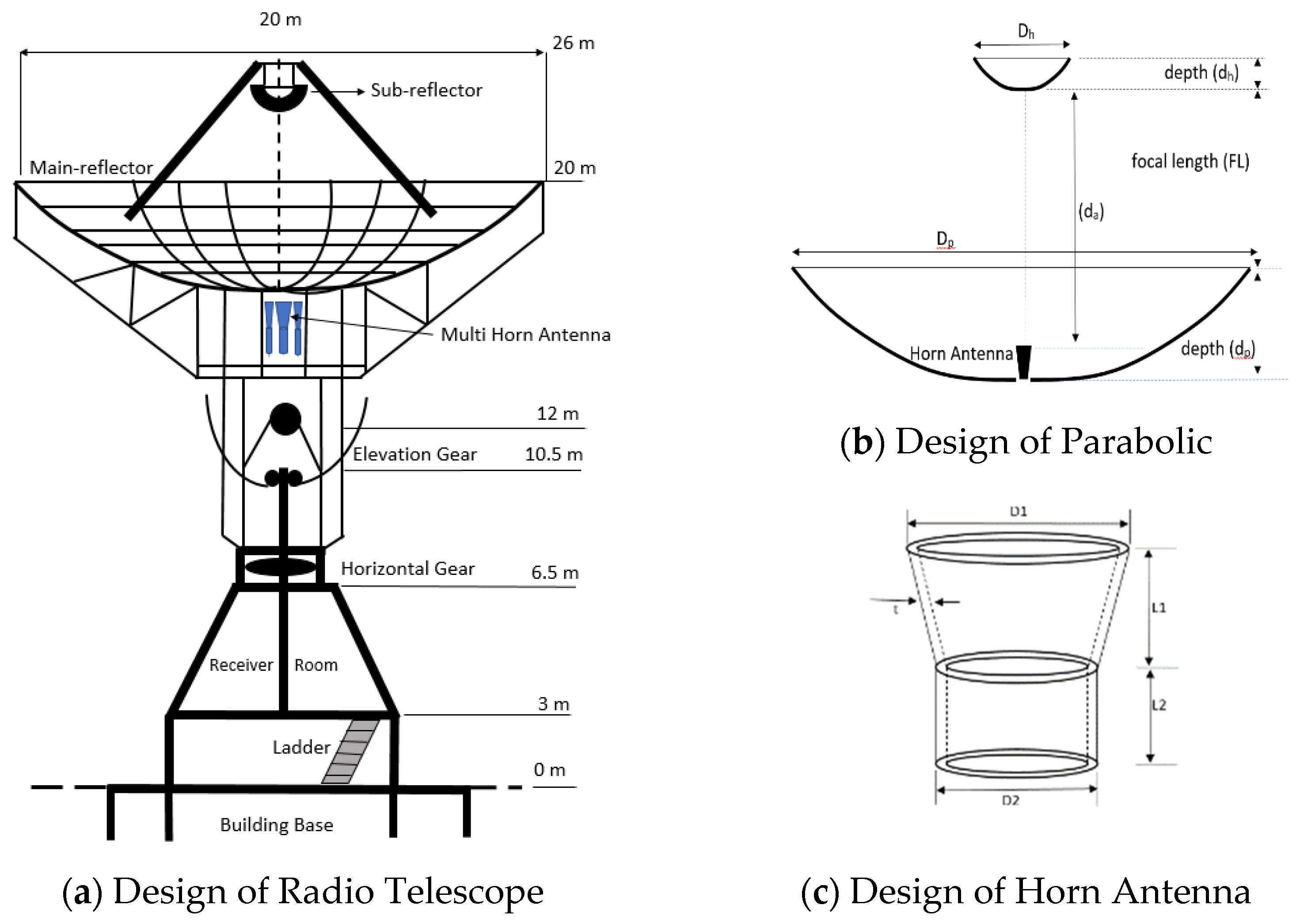



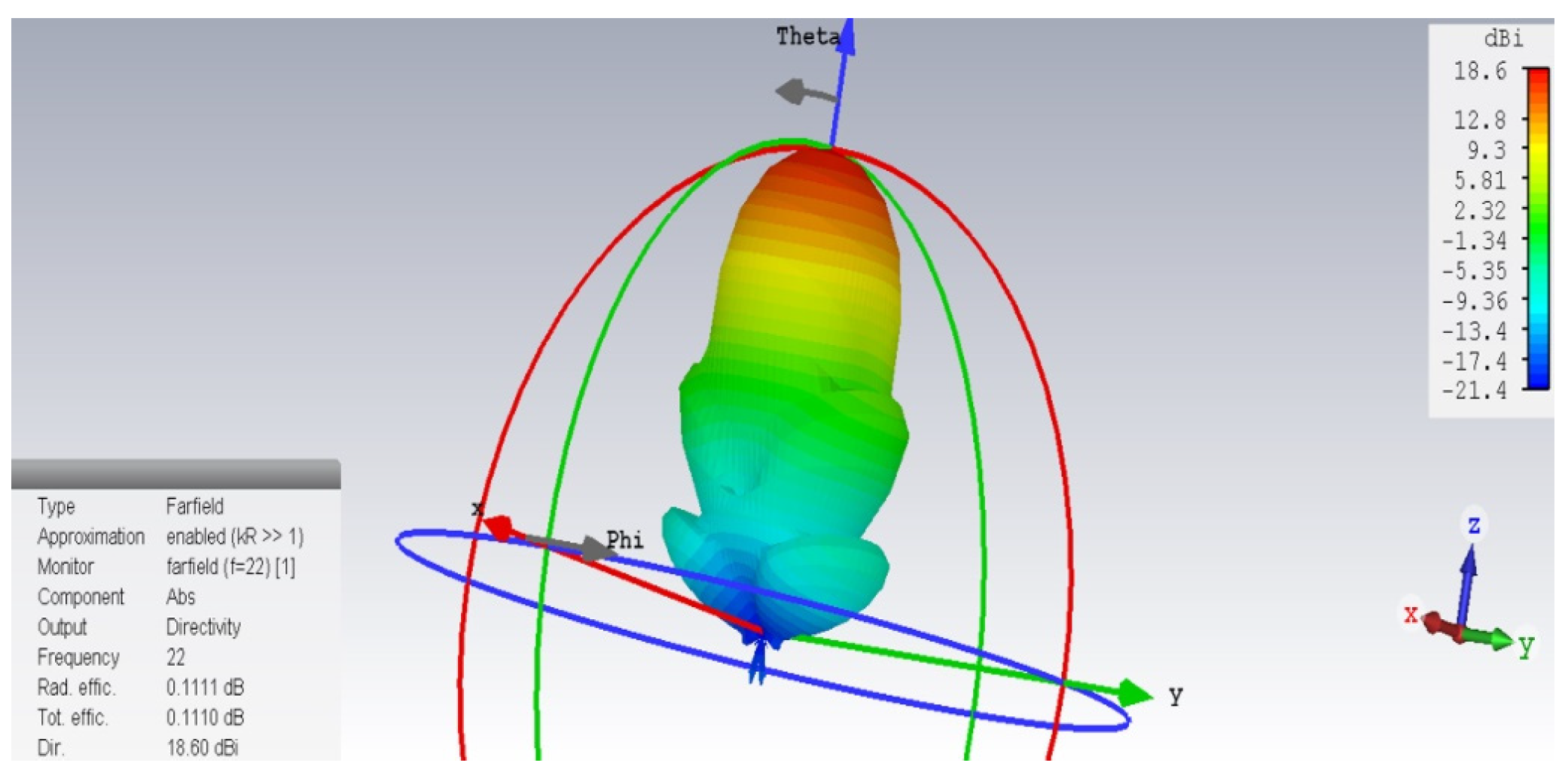
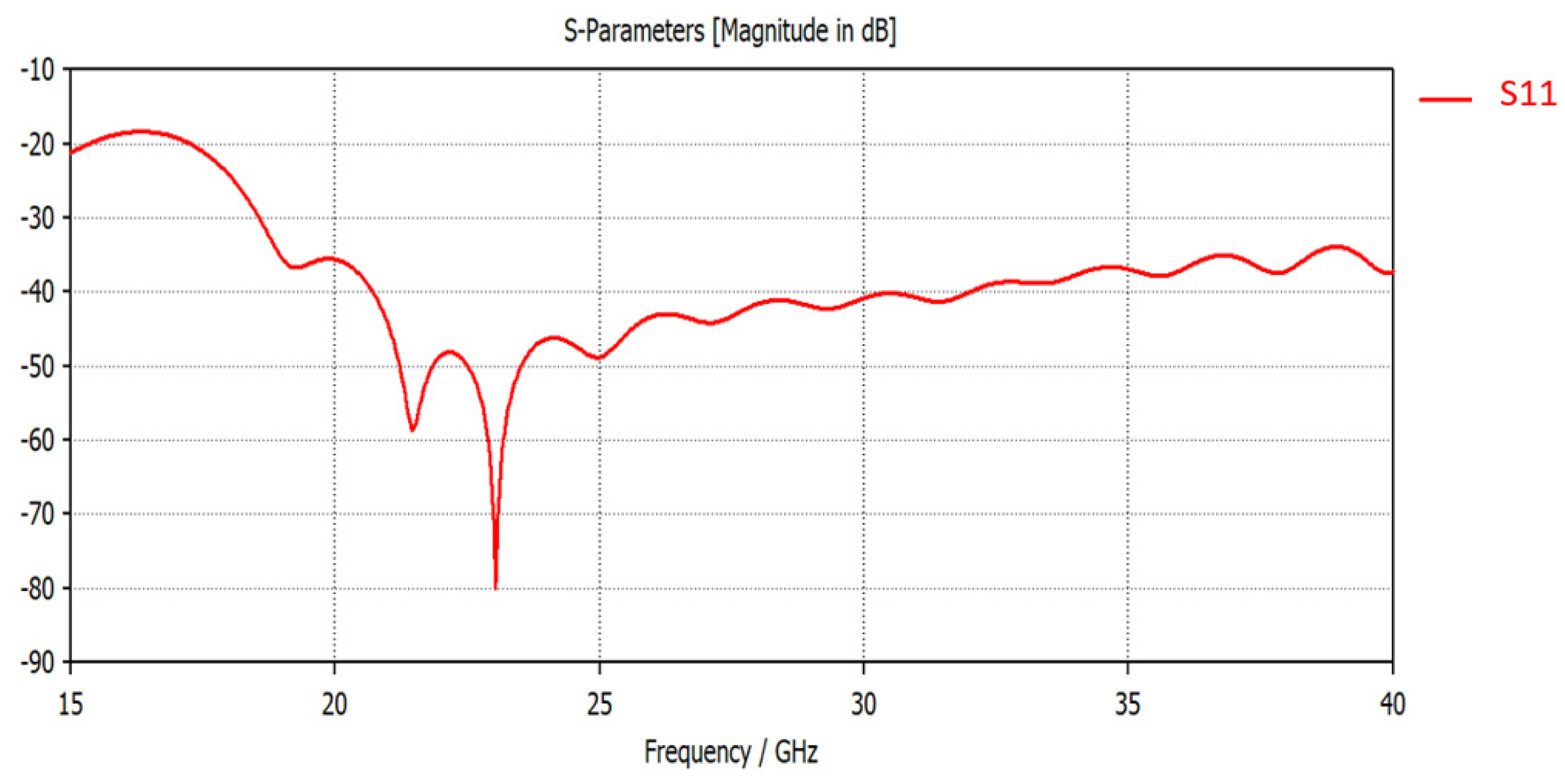
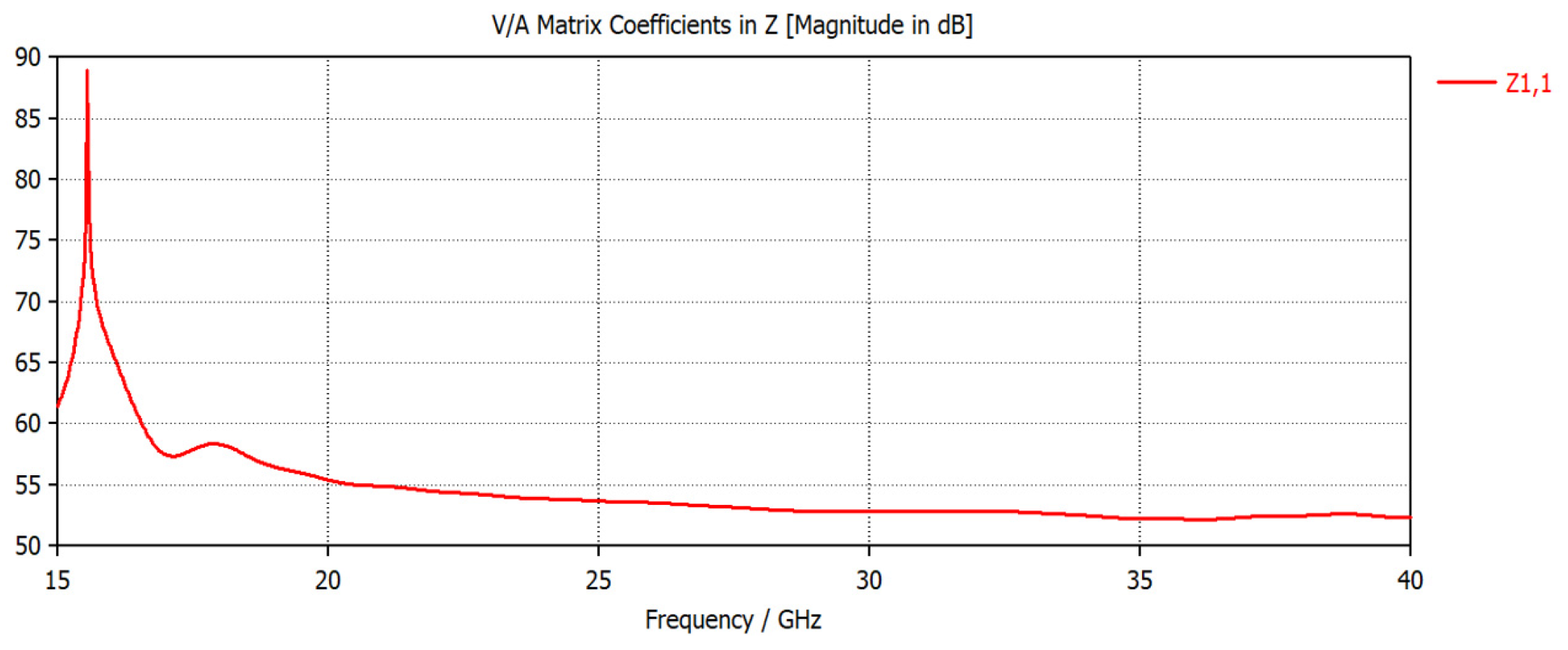
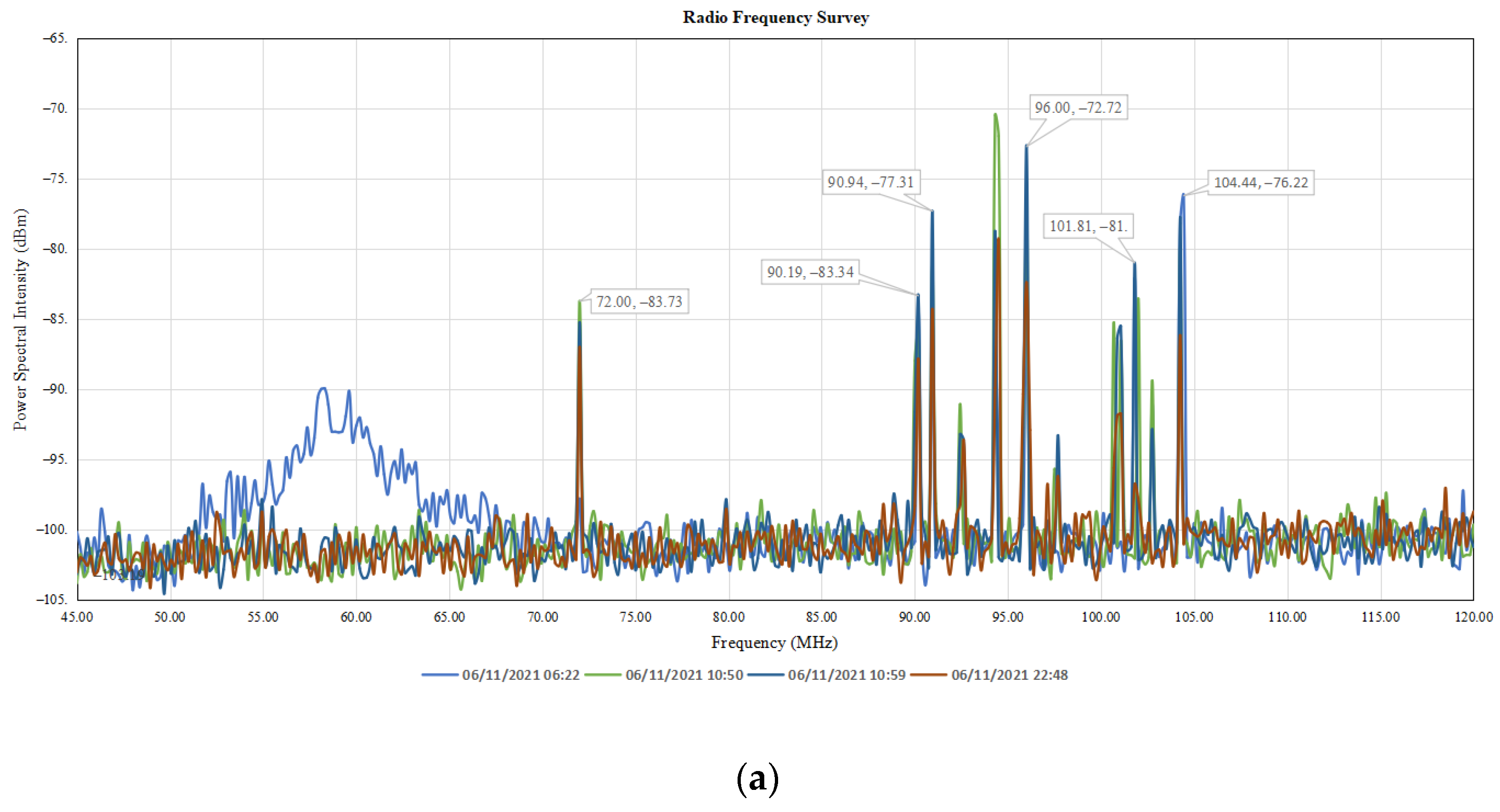
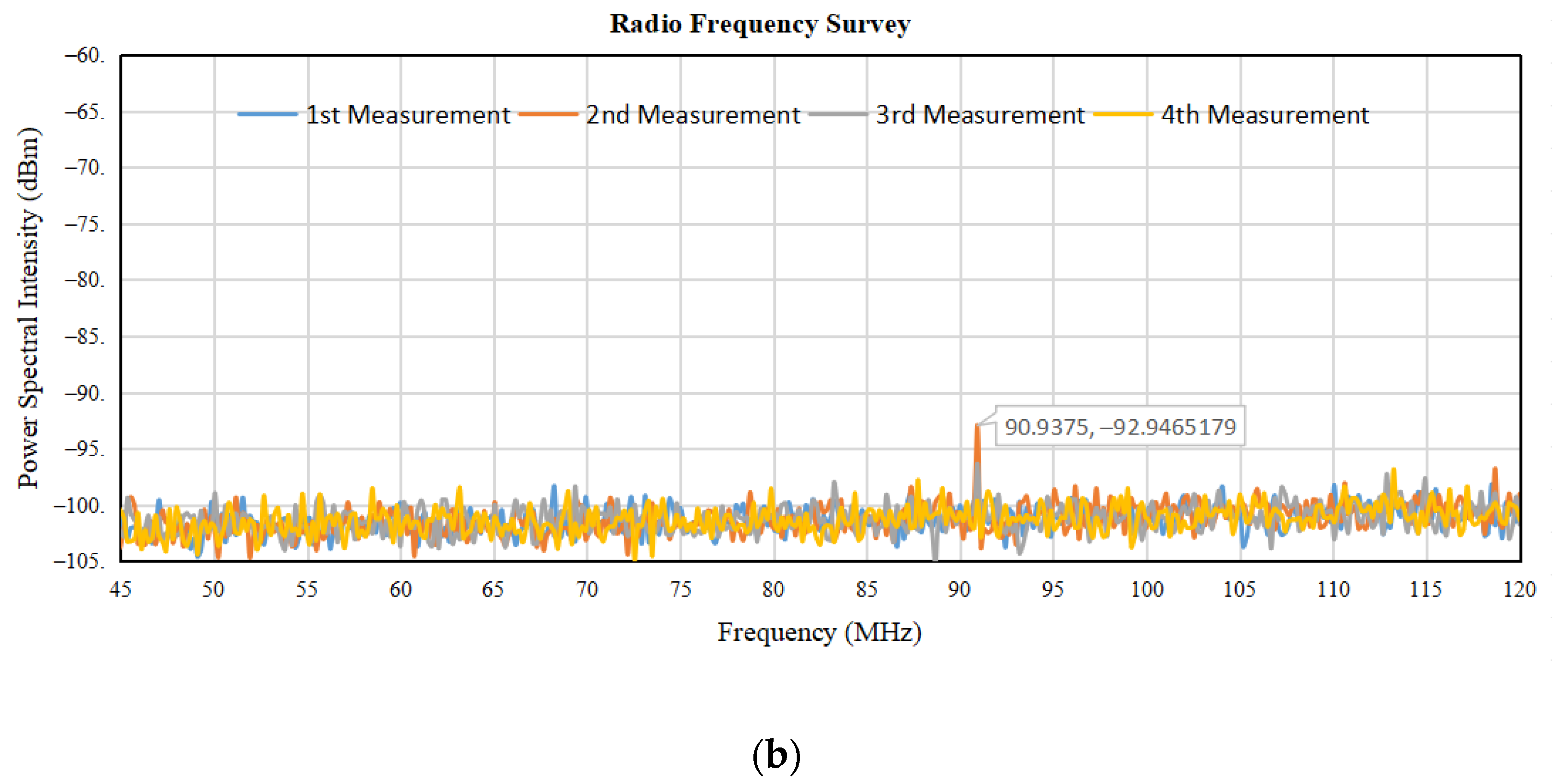

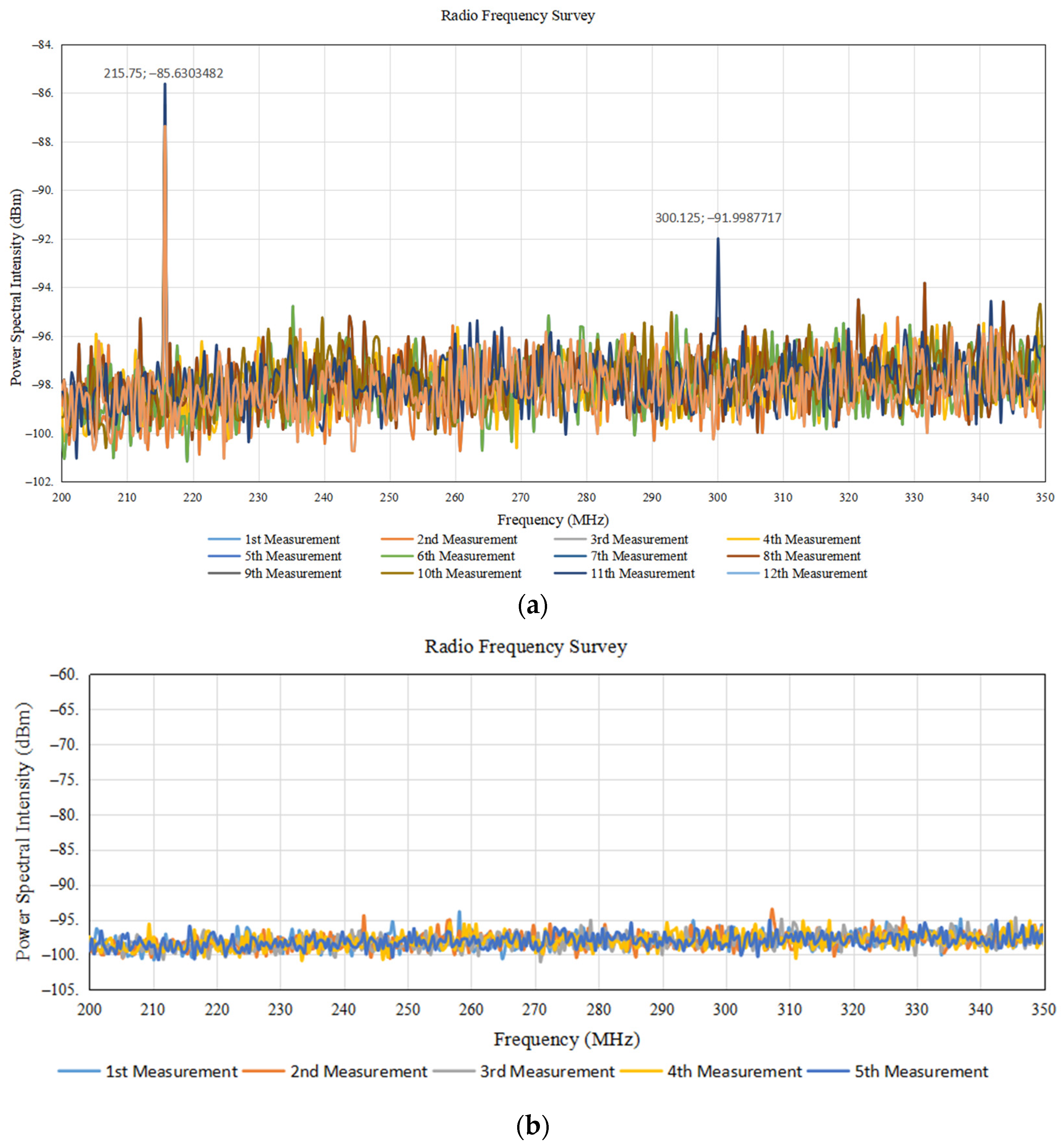
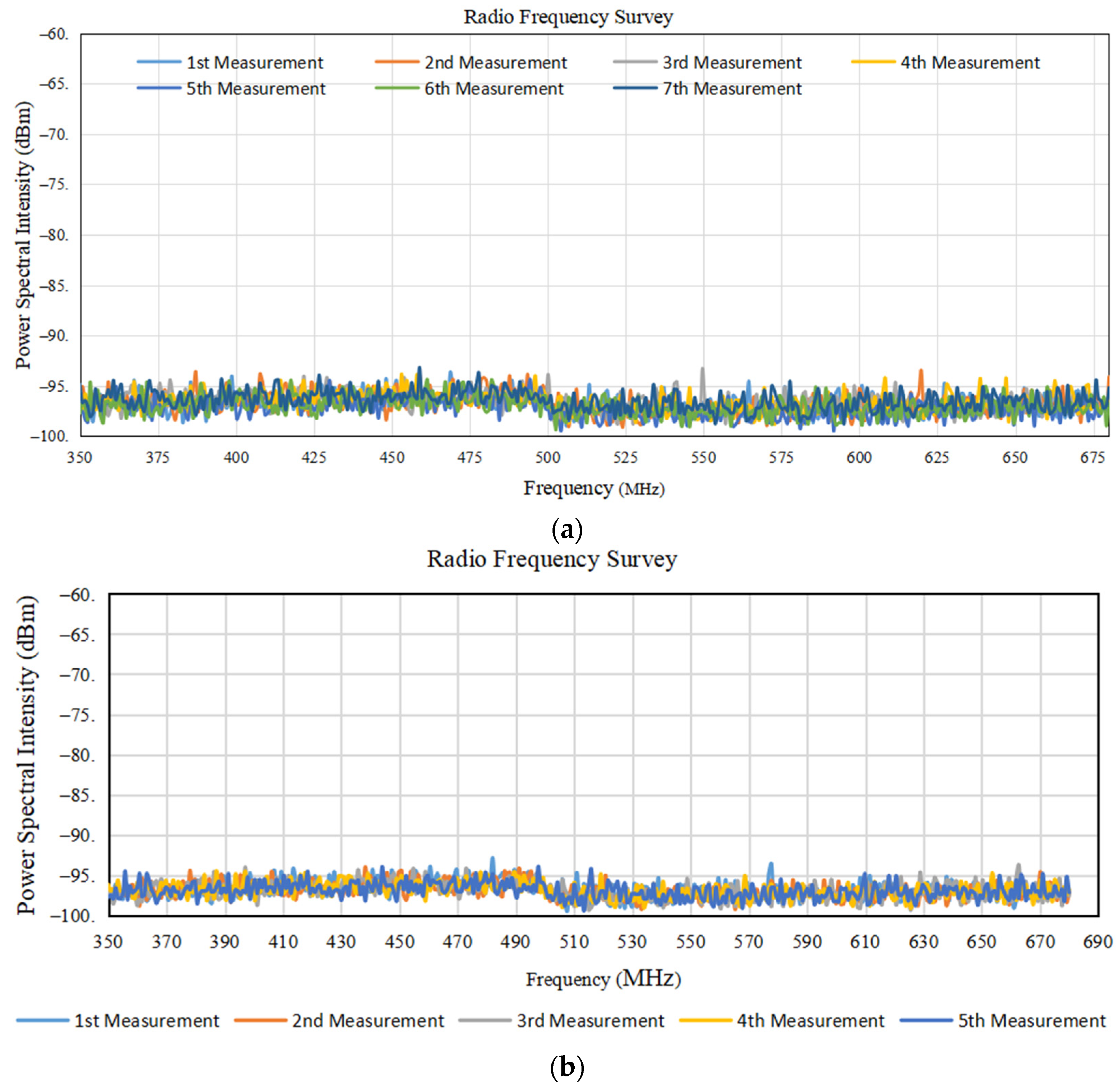
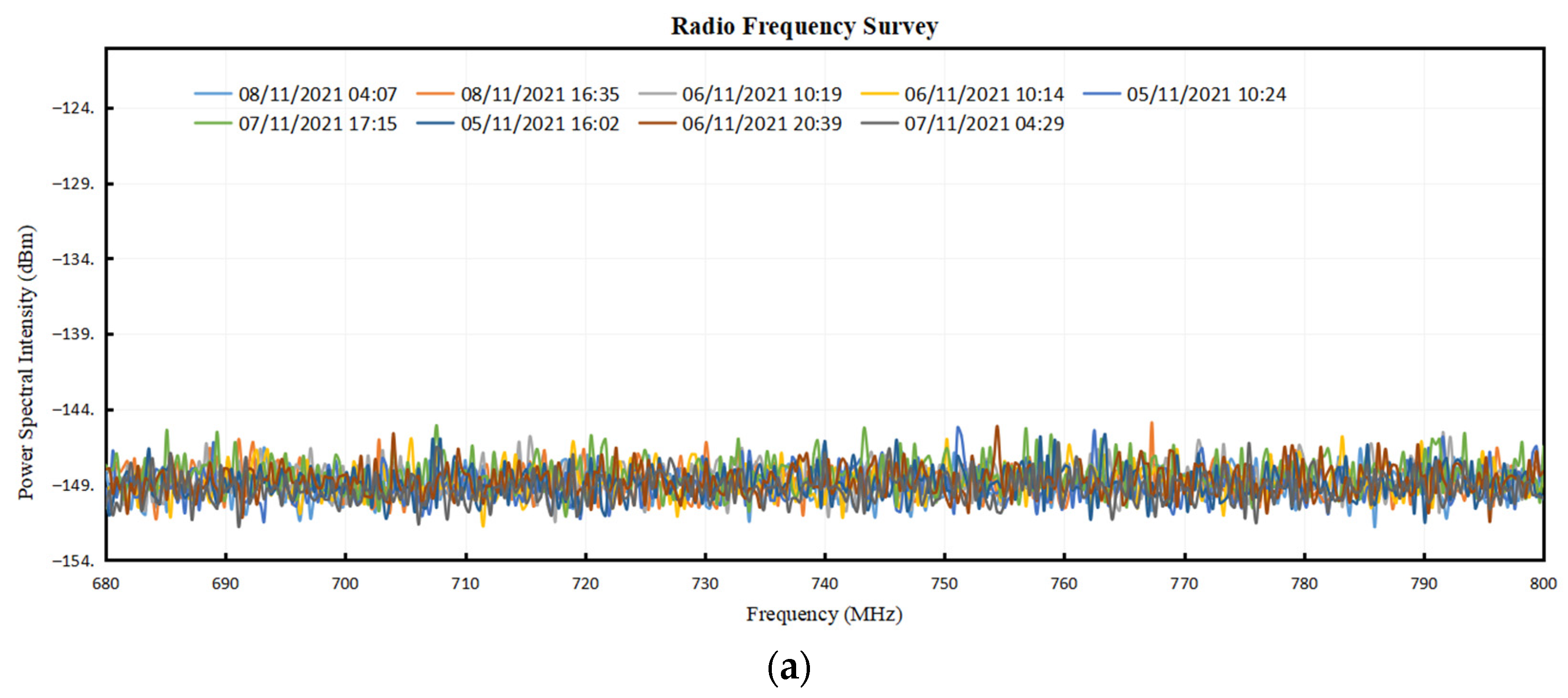

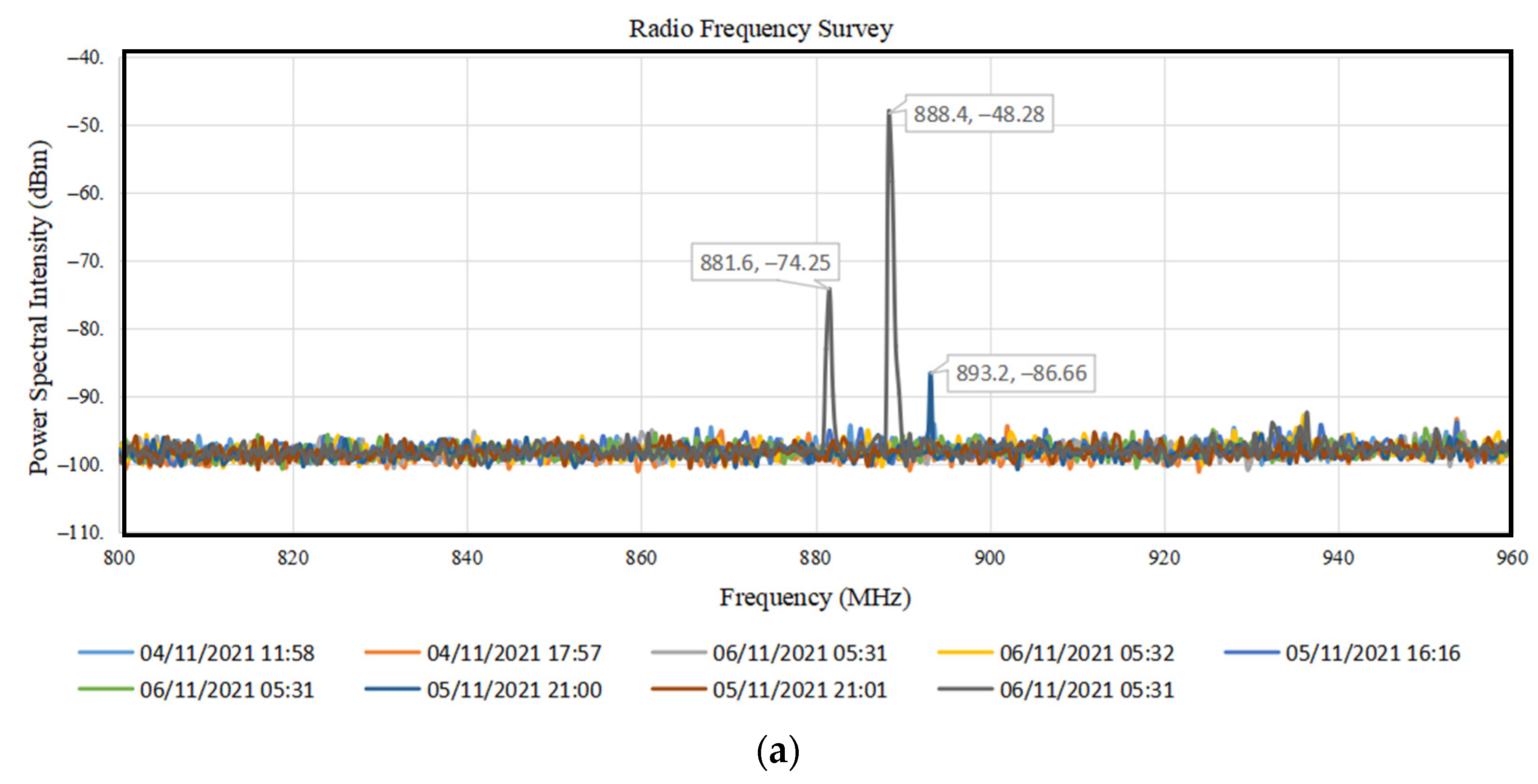
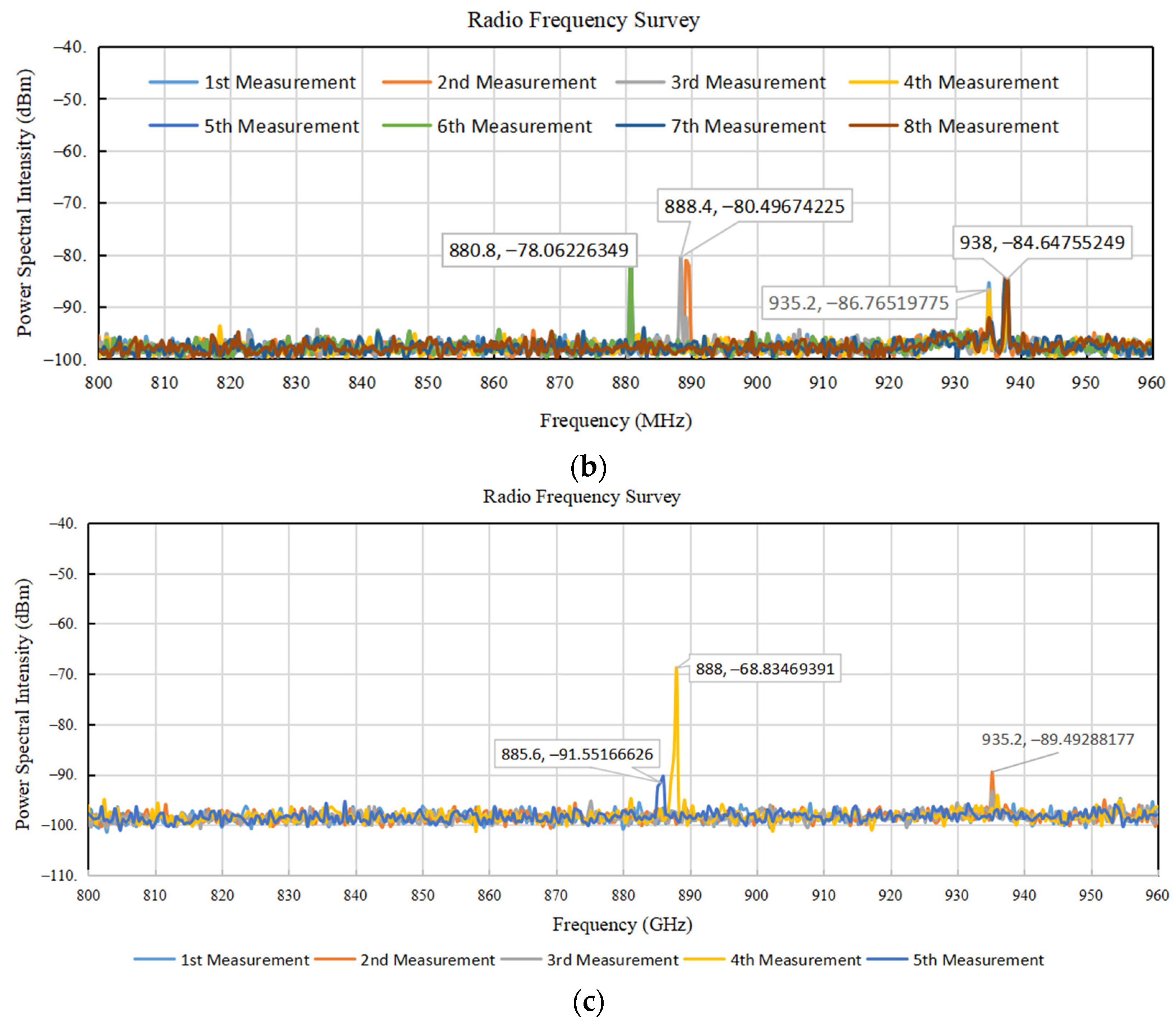
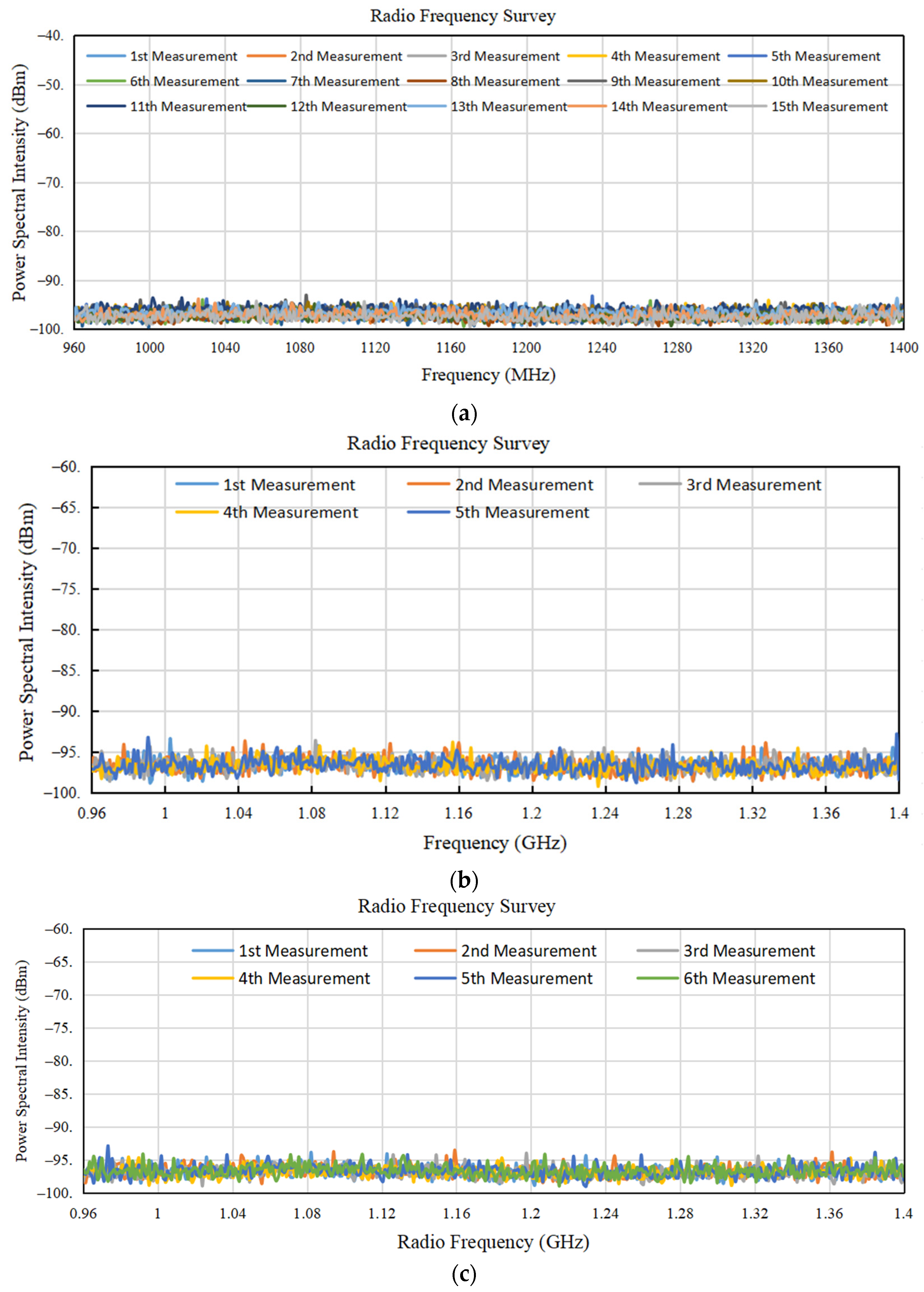
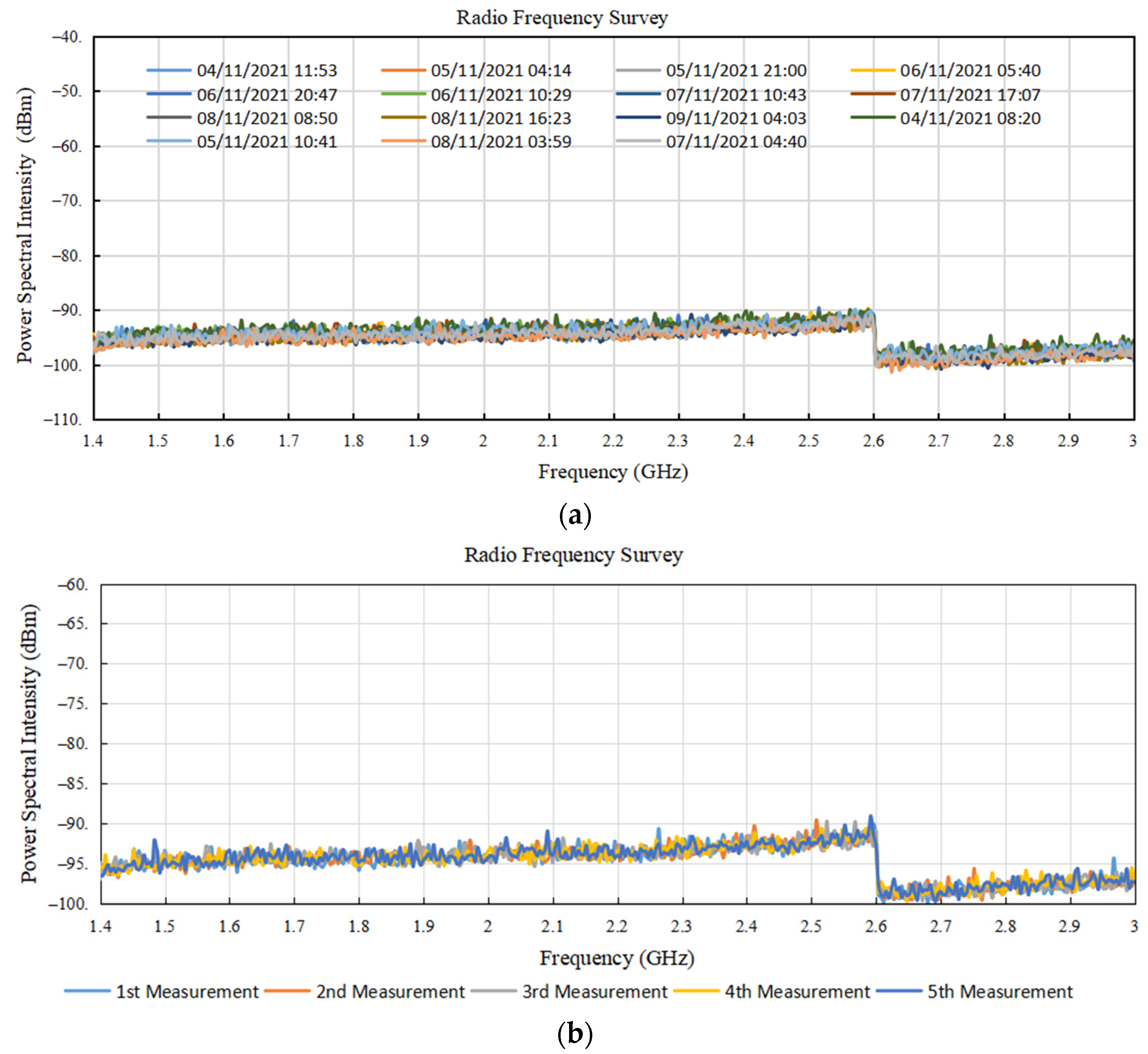



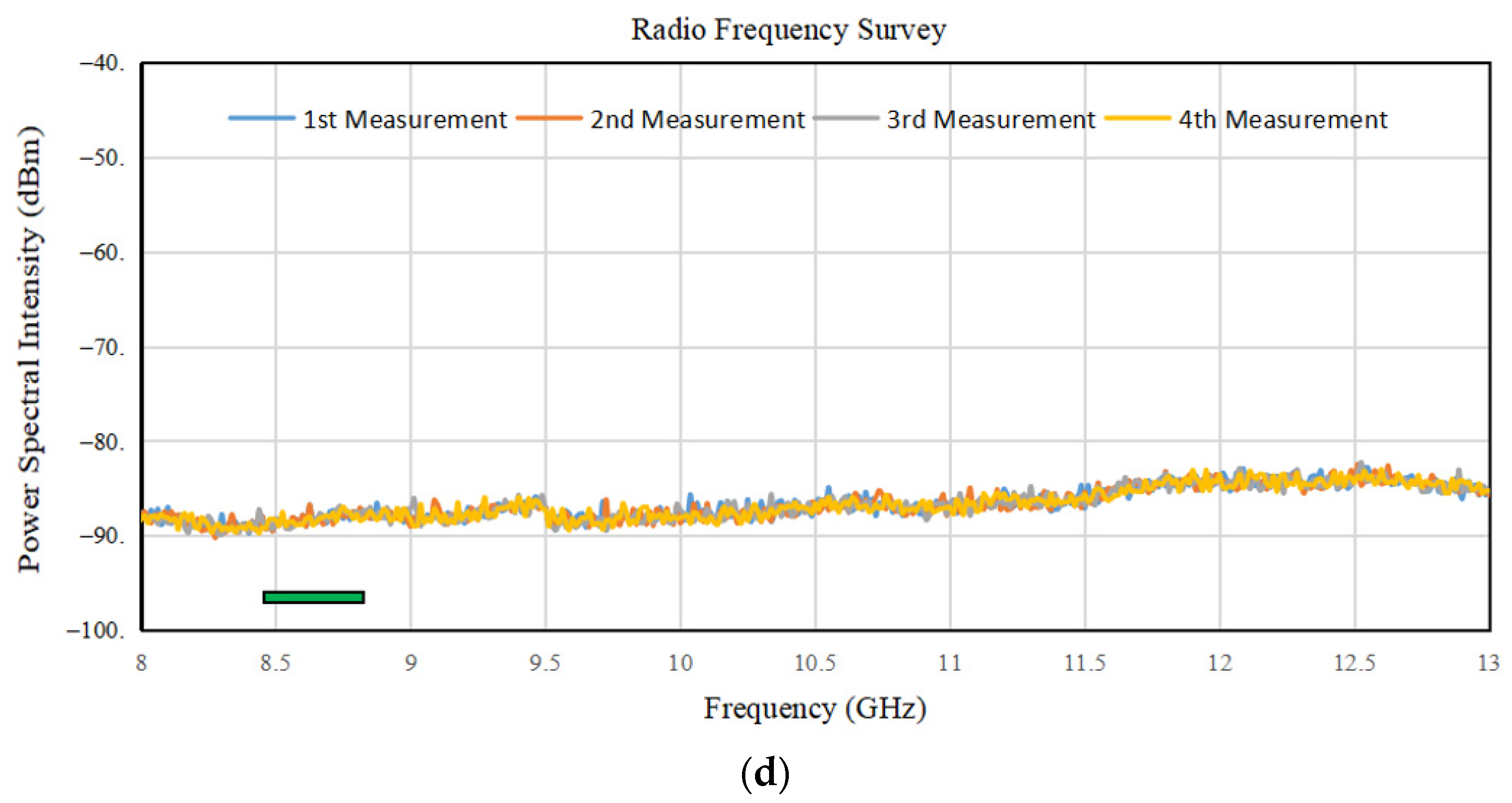
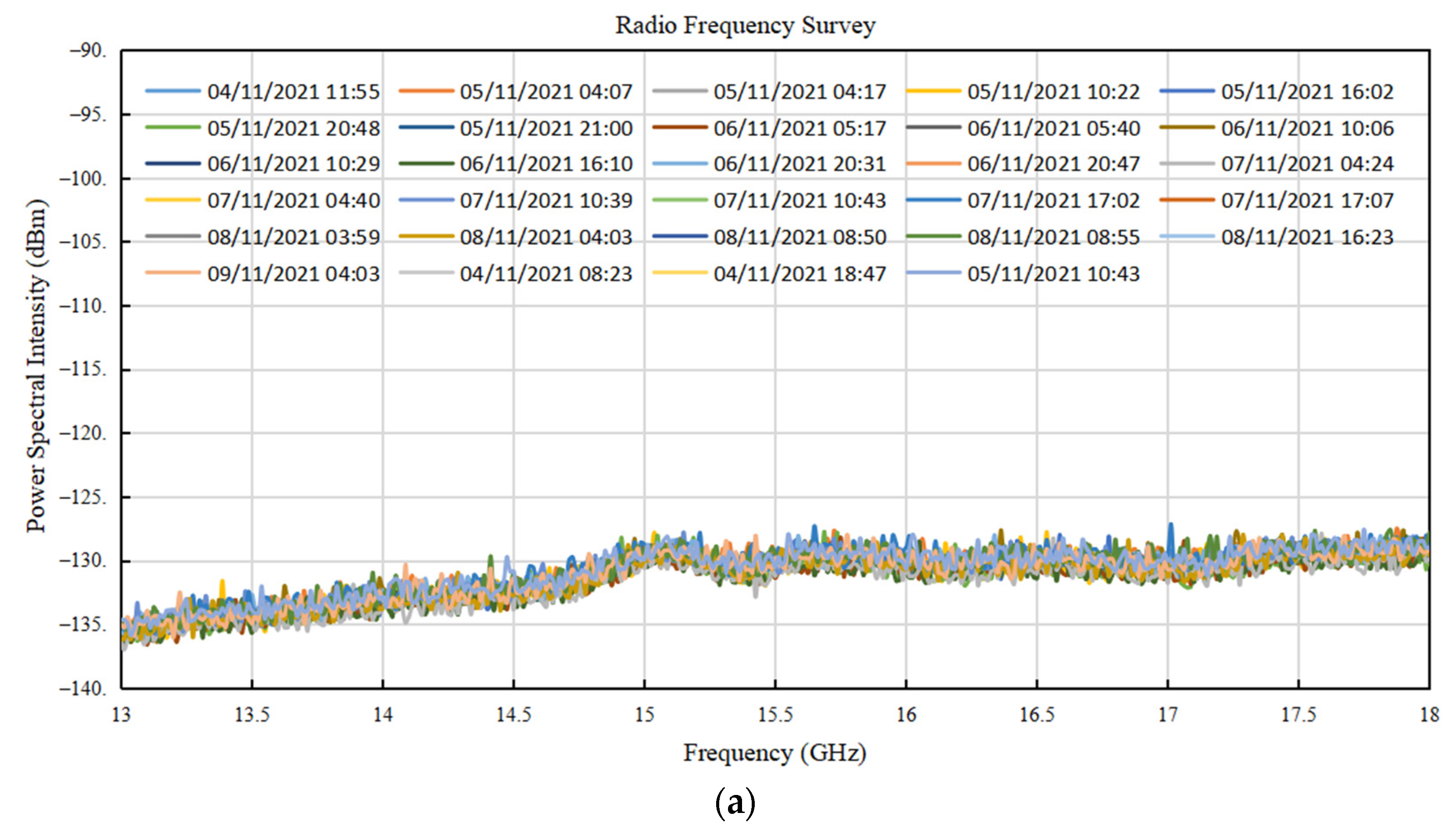

| Instrument | Frequencies | Scientific Goals |
|---|---|---|
| Parabolic antenna | 2–8 GHz | Geodesy and atmosphere |
| 1–43 GHz | Active galactic nuclei | |
| 6/22/43 GHz | Masers | |
| 1–2 GHz | Pulsars | |
| dipole antenna | 200–350 MHz | Hydrogen line and cosmology |
| ~200 MHz | Satellite tracking and space debris |
| No. | Parameter | Value | Unit (mm);(m) |
|---|---|---|---|
| 1. | Diameter of bottom horn antenna () | 20 | mm |
| 2. | Diameter of top horn antenna () | 41 | mm |
| 3. | Length of top and bottom horn antenna () | 113 | mm |
| 4. | Thickness of horn antenna (t) | 10 | mm |
| 5. | Diameter of main reflector () | 20 | m |
| 6. | Depth of main reflector () | 6 | m |
| 7. | Diameter of sub-reflector is | 2 | m |
| 8. | Focal ratio () | 0.36 | |
| 9. | Diameter of subreflector (Dh), Depth of subreflector (dh) | 2.2, 0.49 | m |
| 10. | Magnification of dual reflector system | 1.39 | |
| 11. | Subreflector eccentricity | 6.128 |
| No | Substance | Center Frequency | Minimum Band (MHz/GHz) | BW (MHz) |
|---|---|---|---|---|
| 1. | Hydrogen (HI) | 1420.406 MHz | 1370.0–1427.0 MHz | 13.4 |
| 2. | Methanol (CH3OH) | 6668.518 MHz | 6661.8–6675.2 MHz | 13.4 |
| 3. | Helium (3 He+) | 8665.650 MHz | 8657.0–8674.3 MHz | 17.3 |
| 4. | Water vapour (H2O) | 22.235 GHz | 22.16–22.26 GHz | 100 |
| 5. | Silicon monoxide (SiO) | 43.122 GHz | 43.07–43.17 GHz | 100 |
| No | Parameters | Value |
|---|---|---|
| 1. | Operational frequency | 0.045–18 GHZ |
| 2. | Resolution bandwidth (RBW) | 3 KHz |
| 3. | Video bandwidth (VBW) | 3 KHz |
| 4. | RF attenuation | 0 dB |
| 5. | Pre-amp | Off |
| 6. | External gain | 0 dB |
Disclaimer/Publisher’s Note: The statements, opinions and data contained in all publications are solely those of the individual author(s) and contributor(s) and not of MDPI and/or the editor(s). MDPI and/or the editor(s) disclaim responsibility for any injury to people or property resulting from any ideas, methods, instructions or products referred to in the content. |
© 2024 by the authors. Licensee MDPI, Basel, Switzerland. This article is an open access article distributed under the terms and conditions of the Creative Commons Attribution (CC BY) license (https://creativecommons.org/licenses/by/4.0/).
Share and Cite
Sitompul, P.P.; Razi, P.; Manik, T.; Batubara, M.; Lathif, M.; Mumtahana, F.; Suryana, R.; Huda, I.N.; Hidayat, T.; Taryana, Y.; et al. A Study for a Radio Telescope in Indonesia: Parabolic Design, Simulation of a Horn Antenna, and Radio Frequency Survey in Frequency of 0.045–18 GHz. Aerospace 2024, 11, 52. https://doi.org/10.3390/aerospace11010052
Sitompul PP, Razi P, Manik T, Batubara M, Lathif M, Mumtahana F, Suryana R, Huda IN, Hidayat T, Taryana Y, et al. A Study for a Radio Telescope in Indonesia: Parabolic Design, Simulation of a Horn Antenna, and Radio Frequency Survey in Frequency of 0.045–18 GHz. Aerospace. 2024; 11(1):52. https://doi.org/10.3390/aerospace11010052
Chicago/Turabian StyleSitompul, Peberlin Parulian, Pakhrur Razi, Timbul Manik, Mario Batubara, Musthofa Lathif, Farahhati Mumtahana, Rizal Suryana, Ibnu Nurul Huda, Taufiq Hidayat, Yana Taryana, and et al. 2024. "A Study for a Radio Telescope in Indonesia: Parabolic Design, Simulation of a Horn Antenna, and Radio Frequency Survey in Frequency of 0.045–18 GHz" Aerospace 11, no. 1: 52. https://doi.org/10.3390/aerospace11010052






